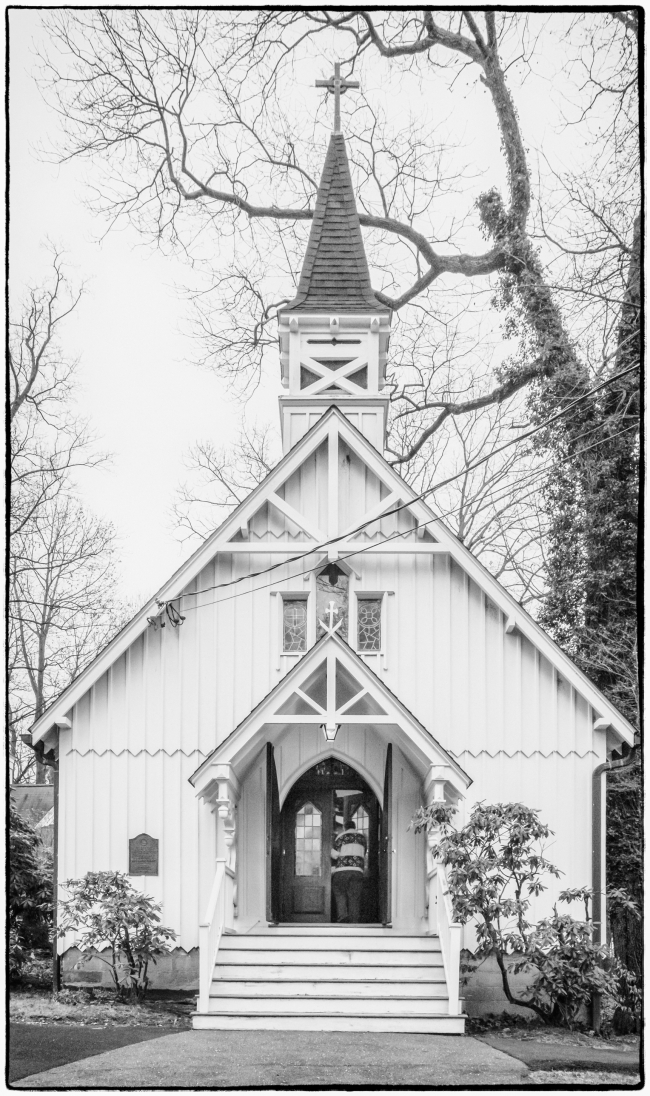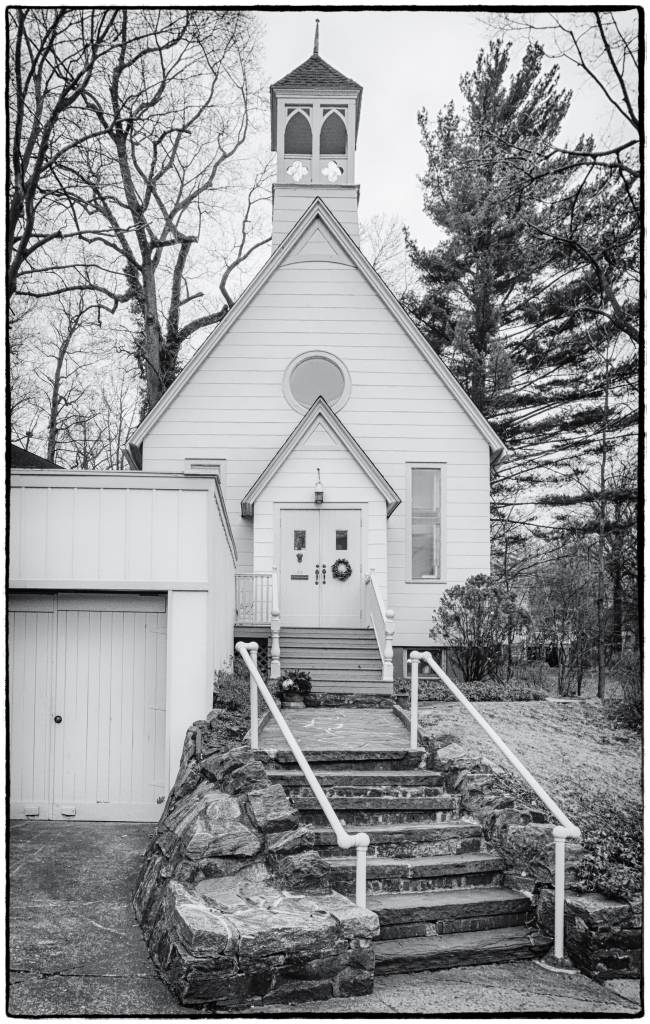We recently went to this lovely church for the first time – to attend a memorial service for our friend Bob Mawson, who passed away on November 22.
Building adjoining the church – Probably the Parish Hall I imagine?
The church has an interesting history as described on its website (which provides additional historical information):
Grace Episcopal Church, today one of nine houses of worship in Hastings-on-Hudson, was built with prize money donated by Admiral David Glasgow Farragut, a southerner by birth, who moved to Hastings in 1861, shortly before the Civil War. Farragut’s resounding victories at Mobile Bay and New Orleans made him one of the great Northern heroes of the war (to this day, several streets and the public middle school in Hastings bear his name), and he became the first naval officer in American history to attain the rank of full admiral. In thanksgiving for his safe delivery from war, Farragut donated $1,000 of his prize money from the Battle of Mobile Bay toward building a new church in his village.
Richard Upjohn, then one of America’s most famous architects (known for the Gothic Revival Trinity Church in Lower Manhattan) designed the church in a style known as Hudson River Gothic. The anchor finials, still on the dormer windows, are said to be a symbol of grace and hope. The construction of what was then called Zion Chapel cost $6,000. The cornerstone of the church, an event attended by Farragut, was laid on October 2, 1867.
In 1909, the Rev. Walter Archbold became Zion Chapel’s first full-time vicar and in 1917, under the leadership of the Rev. Horace Clute, the mission became an independent self-supporting parish known as Grace Church.
…
In 1919, the parish was given “Cooke’s Woods,” the land the church sits on today, by a wealthy family and parishioner whose homestead stood on the site of what is now La Barranca Apartments on South Broadway. The gift stipulated that the parish build a church on the property and maintain the Cooke family cemetery in the rear of the land in perpetuity. The church began a building drive in 1922 with a goal of raising $100,000. Among the contributors to the drive was the famed theatrical couple (and Hastings’ residents) the producer Florenz Ziegfeld (of Ziegfeld’s Follies) and actress Billie Burke (Glinda in The Wizard of Oz).
Richmond Shreve of Hastings (architect of the Empire State Building as well as the Hastings Municipal Building and most of the Farragut Avenue public schools) was hired to design the new church. But with the advent of the Depression, parishioners were suddenly unable to make good on their pledges and construction came to an abrupt standstill. Under the creative stewardship of the rector of Grace, the Rev. Walter Overs, the vestry voted to put a roof on what had begun as the new church and make it the parish hall, and then move the original Upjohn church (at the bottom of Main Street) onto the new site.
In November 1930, Main Street was sealed off to traffic for 48 hours in preparation for the move. The church steeple was removed in order for the building to fit underneath the telephone wires. Then, in what has become Grace Church’s most famous hanging-in-the-balance moment, while the church was firmly lodged in the middle of the street, the movers went bankrupt. The vestry came through once again and managed to raise the funds necessary to move the church onto its new site. Bishop Overs also oversaw the construction of the present English Tudor-style rectory by Sears and Roebuck, one of the company’s earliest prefabs.


